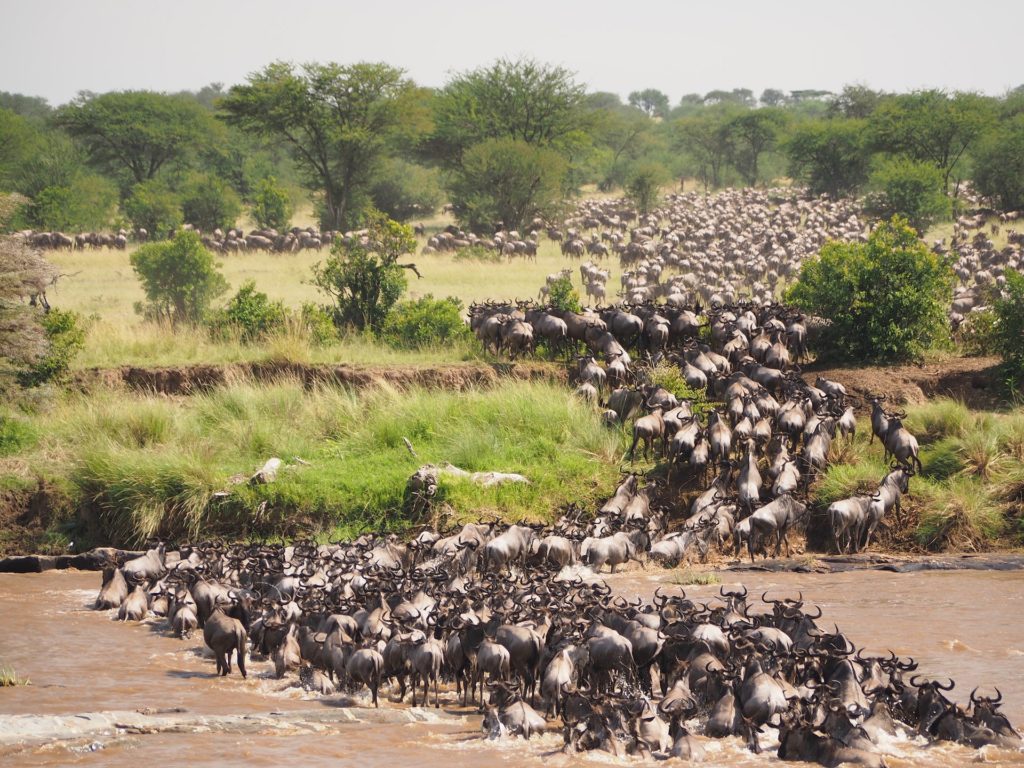
Most people’s knowledge of the Wildebeest Migration comes from documentaries on National Geographic or the iconic Lion King Movie. Despite this, many know very little about this fascinating wildlife event. So, we’ll kick this off by answering the question, what is the wildebeest migration?
The Wildebeest migration, also known as the Masai Mara Migration, the Serengeti Migration, and Gnu Migration, is the movement of large herds of animals between the Mara and Serengeti across the Mara River. During the Migration, there are up to 1000 animals per km2 visible from space. In 2007, it was made the 8th wonder of the world and was also ranked one of the most magnificent safari sightings.
Unfortunately, there’s no way of predicting the actual crossing. But on the bright side, Capture Kenya has been planning Wildebeest Migration safaris for decades. We’ve helped many travelers be in the right place at the best times for the view. If you need a safari expert planner, talk to us today.
Let’s dive deeper into how the Wildebeest Migration works, when, where it happens, where you can stay during your safari, and everything in between.
Where does the wildebeest migration take place?
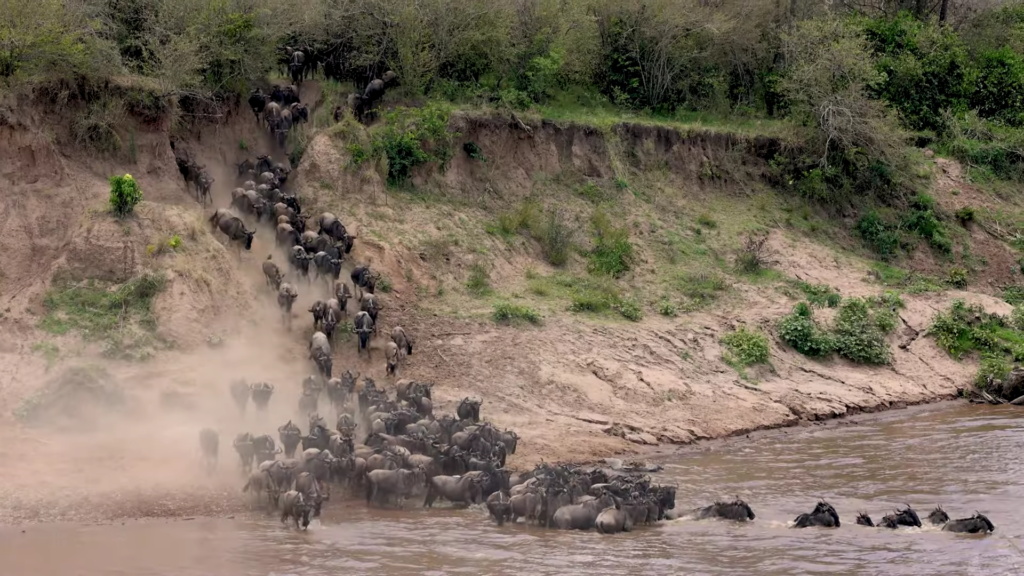
The Migration occurs in a region spread across the Maasai Mara in Kenya and the Serengeti National Park in Tanzania. Despite being in different countries, the two parts are one large and continuous ecosystem supporting millions of animals.
Is It only wildebeests that migrate?
The Wildebeest Migration involves a herd of about 2 million wildebeests plus thousands of gazelles and zebras. Wildebeests often graze with zebras since the latter feed on long and tough grass stems, shortening them enough for the broad muzzle of wildebeest.
Although lions and other carnivores can be seen in the herd, they are there to feast on grazing animals but not migrate. If we’re being honest, the hunt during the Migration makes the experience all the more fun.
Why do wildebeests migrate?
In their crossing, animals follow the rains, which will cause new lush grass to sprout. The animals take advantage of the seasonal conditions and spend the wet season in the southeast plains and the dry season in the northwest woodlands.
The animals also play a big role in shaping the environment to their needs by the weight of their numbers. The pilgrimage stretching over 800 km is a never-ending cycle of dispersal and movement. Wildebeests need to quench their thirst daily; hence their movement is dictated by the availability and accessibility of water. Close studies reveal that wildebeest have a sixth sense of following storms.
Overall, the journey has no real start or end. The wildebeest are always in search of food and water to survive.
Every year, about 250,000 wildebeests die due to injury, predation, or exhaustion.
Can you predict the wildebeest migration?
Although the animals may herd by the banks of the Mara River, when the actual crossing happens is unknown. Some animals will get to the water and cross immediately, while others will hang around and graze for a few days. Still, others choose to turn back and never cross.
Since no one can predict the actual crossing, we recommend you give as much time for the safari as possible to better your chances of witnessing the crossing.
How do you witness the wildebeest migration?
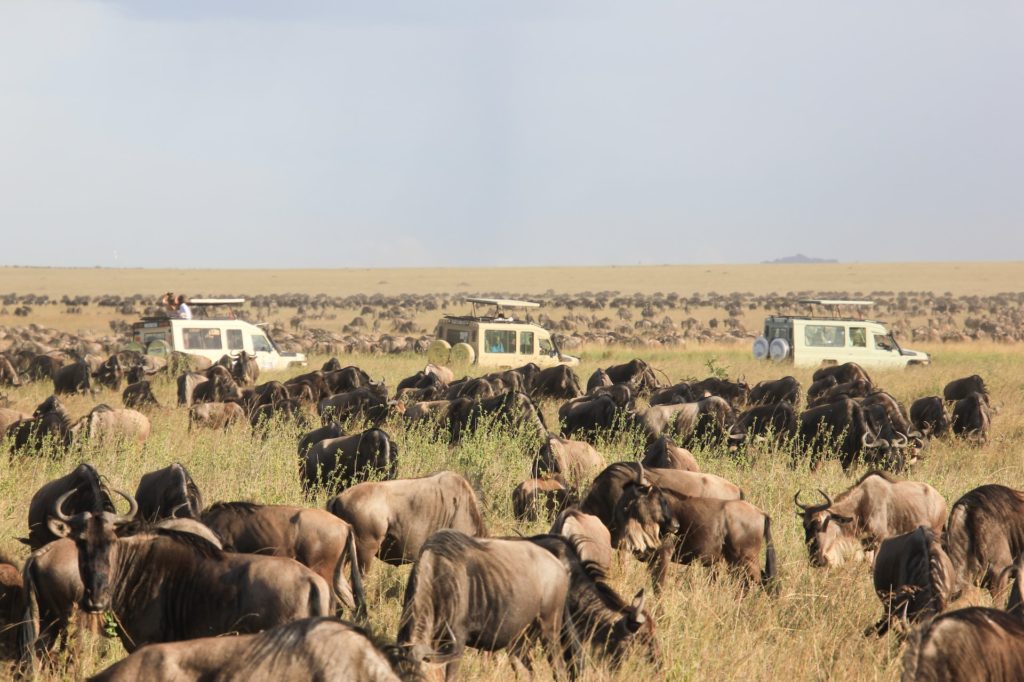
You can watch the Migration while on a game drive safari in Masai Mara. The safari is done in specialized vehicles and with the guidance of experienced guides. There are several key crossing points, so it’s prudent to station yourself at these points throughout the safari.
Note: Some camps and lodges are hours from these vantage points.
Monthly breakdown of the Wildebeest Migration
Over the years, Kenya and Tanzania’s short and long rainy seasons have become irregular and unpredictable. The rains can be early or late, throwing the entire migration calendar out of sync. This is another reason you should plan your safari as long as possible. Flying in for two nights might not cut it.
That said, below is a quick guideline of where the herds are at different times of the year. Remember, Migration is triggered by rains which can be late, early, or on time.
January
The animals are in Serengeti National Park – Tanzania. They are moving from the northeast to the south into the area around Lake Ndutu. Since the Serengeti isn’t fenced, the herds roam freely to find good grazing land.
Note: it’s not a single herd of two million plus animals, but rather smaller herds of thousands and hundreds spread out in the park, moving in the general direction described.
February and March
It’s calving season – over 8,000 wildebeest babies are born daily. Ready yourself to see a lot of cute, wobbly calves, plus heartbreak, as predators swoop in for easy kills. Such is the circle of life in the wild, and you get front-row seats to experience the live-action drama.
If the short rains came in November and December, the grass is now green, and the animals are feeding well in the southern plains as they slowly move west in march.
April
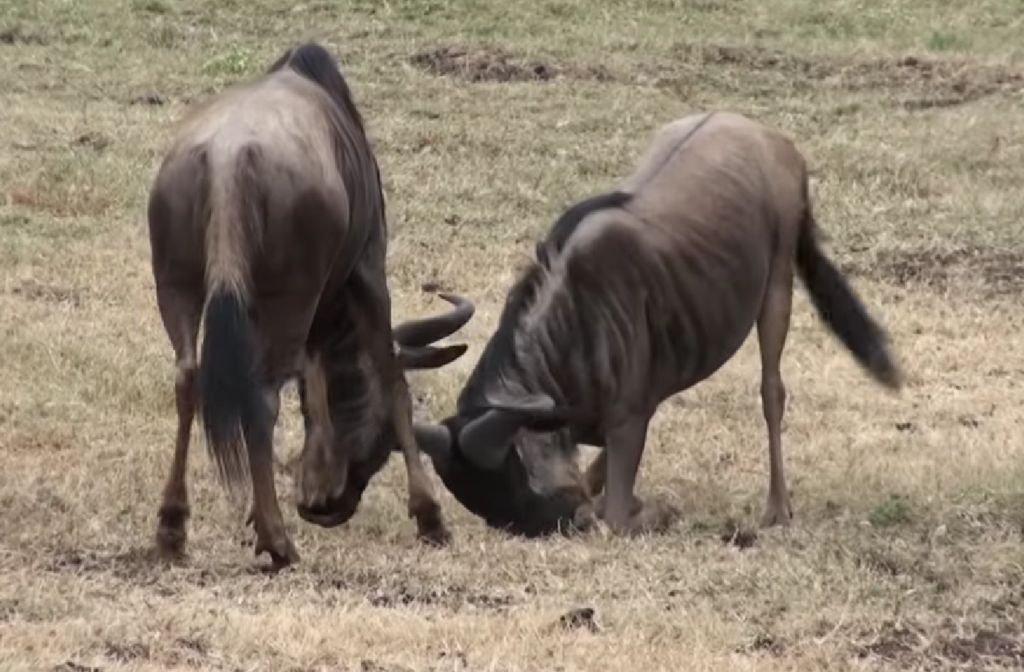
The long rains start, and the herds move northwest to Moru and Simba Kopjes. The action-packed breeding season is in full gear, with testosterone-fueled duels between males competing for mating rights taking center stage.
May
The herds are on the move stretching up to 40 km. The herds are moving faster now that the calves are stronger.
June
The wildebeest herds in central Serengeti are preparing to split as some cross the Grumeti River.
July
The Migration is now in the Grumeti region in the northern parts of the Serengeti, closer to the Nile Crocodile-infested Mara River waters.
August
It’s the best time to watch the dramatic crossing from the Serengeti in the Mara. The Masai Mara is open to the public for exclusive safaris.
September and October
The herds break into even smaller groups since only half cross the river. The wildebeest that live to tell the tale of their crossing are rewarded with lush green grass to feed on.
November
The short rains should have started falling, signaling the wildebeest back to the Serengeti.
Note: We should point out that although Africa is viewed as a hot place, the rains cool things down. Plus, the drives are often early in the morning and late in the afternoon when the sun is down. A pair of decent trousers, closed shoes that can handle some mud, and a waterproof/fleece jacket will do.
December
The wildebeests mouth further south into northeast Serengeti to feast and prepare for another migration in the coming months.
When’s the best time to go on a safari?
To make it easier to predict the whole event, we’ve made a table with expected events and timelines. Bear in mind that these are estimations. Also, a herd can stay on the river banks for two weeks or multiple times a day!
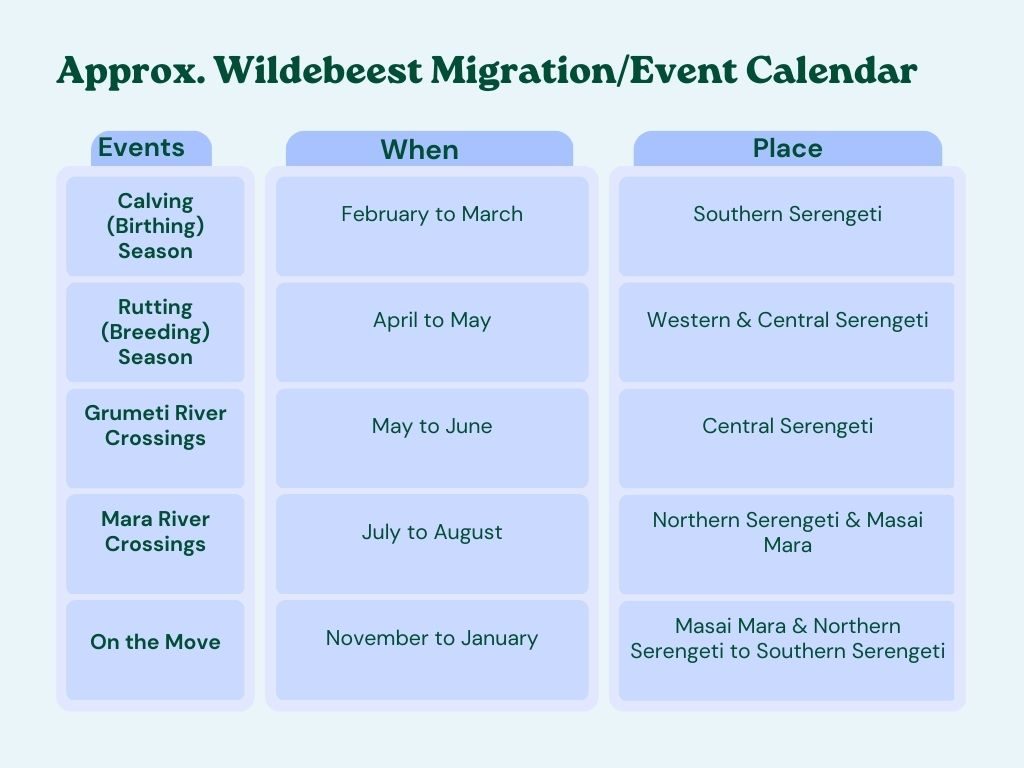
Book an experience of the fascinating Wildebeest show
If the Wildebeest Migration is on your bucket list, no one’s better to help you cross it off than Capture Kenya. We are dedicated to quality and delivering beyond your expectations. We have awesome safari packages to meet your needs.
Email us at travel@capturekenya.com or fill out the online form for a quotation for your next thrilling safari.
